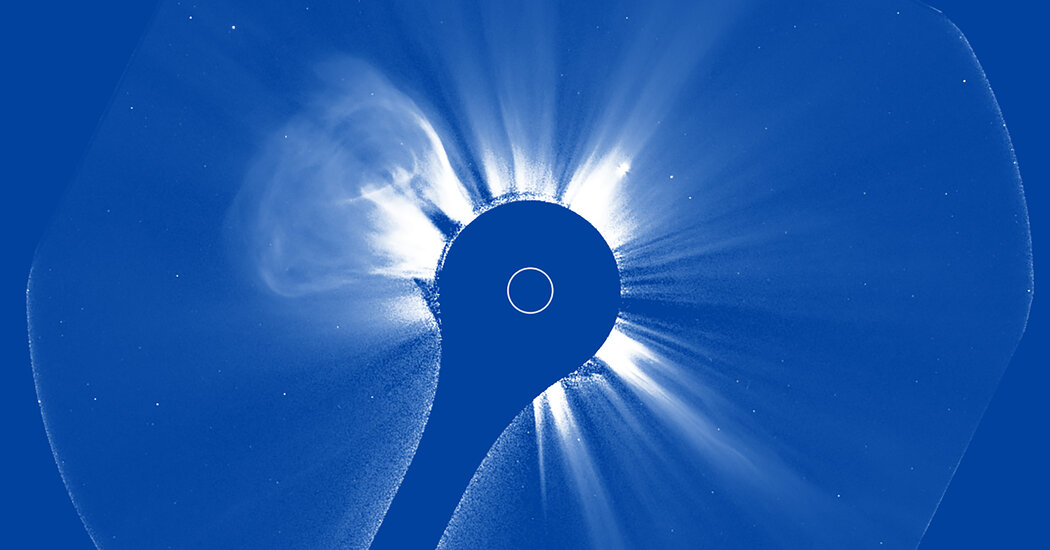Forecasters will soon be able to use the instrument, a coronagraph, to better monitor the effects of solar storms.
Before the northern lights fill the night sky on Earth with their eerie neon glow, a blast of electrified gas flares up from the sun’s surface. And scientists are now getting a powerful new view of how those ejections move through the corona, the sun’s tempestuous outer atmosphere.
On Tuesday, the National Oceanic and Atmospheric Administration unveiled the first imagery from its newest telescope in space. Meteorologists will use pictures from the device to help them better forecast space weather, including when you can expect to see auroras.
The new instrument is called the Compact Coronagraph, or CCOR-1. It launched in June aboard GOES-19, the newest of NOAA’s fleet of weather satellites. The coronagraph can continuously monitor the sun, and it will send data to scientists on the ground every 15 minutes.
“The forecasts can always count on it,” said James Spann, the senior scientist of space weather observations at NOAA, which operates the satellite. He added that CCOR-1 was the first coronagraph devoted to forecasting.
In the past, scientists have relied on imagery from satellites that are primarily used for longer-term scientific research, including an instrument on SOHO, the Solar and Heliospheric Observatory, a joint mission by NASA and the European Space Agency. But according to Dr. Spann, research satellites aren’t designed for continuously gathering data, meaning that forecasters may be left blind to solar activity for hours.
CCOR-1 is one solution to that.
The coronagraph is essentially a solar telescope that observes the corona, the wispy, outer part of the sun’s atmosphere. The corona is typically invisible from Earth, although it can be spotted during a total eclipse.
The new telescope uses a mask to block light from the sun, much like an eclipsing moon.
Explosions like the one caught by CCOR-1 are created by unstable contortions in the magnetic field of the sun, which cause it to expel hot plasma into its atmosphere. Sometimes these storms, called coronal mass ejections, are pointed toward Earth, generating scores of shimmering lights in our night skies.
“Aurorae are the most visible expression of space weather,” Dr. Spann said. “It’s like the icing on the cake.”
But space weather can also have dire effects. Radiation from solar activity can harm astronauts on the International Space Station. It heats up Earth’s atmosphere, affecting GPS satellites and other communications systems in orbit. It can also cause power grids to fail.
Earlier this month, NASA and NOAA announced that the sun had reached a peak in activity, which fluctuates in an 11-year cycle. A heightened number of solar storms could continue for the next year.
That makes it ever important for space weather forecasters to stay prepared, lest a particularly powerful blast of solar material knock out systems across a large portion of the world.
“It’s not a matter of if,” Dr. Spann said. “It’s a matter of when a big one is going to occur.”
